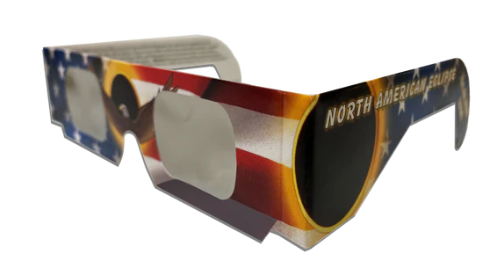 A hundred years ago this month, the cover of the September 1923 issue of Science and Invention was celebrating the total solar eclipse that was to take place on September 10, 1923.
A hundred years ago this month, the cover of the September 1923 issue of Science and Invention was celebrating the total solar eclipse that was to take place on September 10, 1923.
 In the U.S., the path of totality covered only a tiny sliver of southern California, including the city of San Diego, as well as Santa Catalina and the Channel Islands. The best view, however, was in Mexico, since the path extended from Baja California to Yucatan. The Mexican National Government, as well as the governments of San Luis Potosi and Mexico City were heavily involved. The National Observatory and the Mexican National Railway were also assisting in preparations, and astronomers from around the world were preparing to descend upon the country.
In the U.S., the path of totality covered only a tiny sliver of southern California, including the city of San Diego, as well as Santa Catalina and the Channel Islands. The best view, however, was in Mexico, since the path extended from Baja California to Yucatan. The Mexican National Government, as well as the governments of San Luis Potosi and Mexico City were heavily involved. The National Observatory and the Mexican National Railway were also assisting in preparations, and astronomers from around the world were preparing to descend upon the country.
Of course, we have two eclipses coming up in short order. The warm-up act will be the annular eclipse of Saturday, October 14, which will extend from Oregon to Texas, then into Mexico and Central and South America. It will also be visible as a partial eclipse in most of North and South America. Since the moon is currently too far from the earth for a total eclipse, the sun will appear to be a “ring of fire” along the path. While this phenomenon is certainly interesting, it’s not really spectacular.
The spectacular event is coming up on Monday, April 8, 2024, when a total eclipse will be visible along a line from Mazatlan, Mexico, and then in the United States and Canada, along a path from Texas through Maine. While the annular eclipse isn’t worth a special trip for most people, the total eclipse certainly is, just as it was a hundred years ago.
 For the annular eclipse, and for all but a few minutes of the total eclipse, you will need eye protection to view the partially eclipsed sun. Our sister site, MyEclipseGlasses.com, has approved eclipse glasses available for only $3.99, with free shipping anywhere in the world. Just like eclipse glasses in 2017 (and just like toilet paper in 2020), they’ll be in short supply, so the time to order is now.
For the annular eclipse, and for all but a few minutes of the total eclipse, you will need eye protection to view the partially eclipsed sun. Our sister site, MyEclipseGlasses.com, has approved eclipse glasses available for only $3.99, with free shipping anywhere in the world. Just like eclipse glasses in 2017 (and just like toilet paper in 2020), they’ll be in short supply, so the time to order is now.













